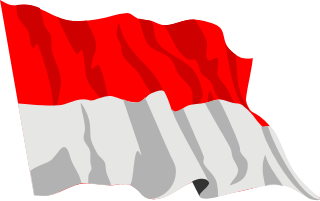English orthography is the writing system used to represent spoken English, allowing readers to connect the graphemes to sound and to meaning. It includes English's norms of spelling, hyphenation, capitalisation, word breaks, emphasis, and punctuation.

Walloons are a Gallo-Romance ethnic group native to Wallonia and the immediate adjacent regions of France, Germany, Luxembourg and the Netherlands. Walloons primarily speak langues d'oïl such as Belgian French, Picard and Walloon. Walloons are historically and primarily Roman Catholic.
Y, or y, is the twenty-fifth and penultimate letter of the Latin alphabet, used in the modern English alphabet, the alphabets of other western European languages and others worldwide. According to some authorities, it is the sixth vowel letter of the English alphabet. In the English writing system, it mostly represents a vowel and seldom a consonant, and in other orthographies it may represent a vowel or a consonant. Its name in English is wye, plural wyes.

Alsatian is the group of Alemannic German dialects spoken in most of Alsace, a formerly disputed region in eastern France that has passed between French and German control five times since 1681.

Wallonia, officially the Walloon Region, is one of the three regions of Belgium—along with Flanders and Brussels. Covering the southern portion of the country, Wallonia is primarily French-speaking. It accounts for 55% of Belgium's territory, but only a third of its population. The Walloon Region and the French Community of Belgium, which is the political entity responsible for matters related mainly to culture and education, are independent concepts, because the French Community of Belgium encompasses both Wallonia and the bilingual Brussels-Capital Region.

In linguistics, specifically phonetics and phonology, schwa is a vowel sound denoted by the IPA symbol ⟨ə⟩, placed in the central position of the vowel chart. In English and some other languages, it usually represents the mid central vowel sound, produced when the lips, tongue, and jaw are completely relaxed, such as the vowel sound of the ⟨a⟩ in the English word about.
A breve is the diacritic mark ˘, shaped like the bottom half of a circle. As used in Ancient Greek, it is also called brachy, βραχύ. It resembles the caron but is rounded, in contrast to the angular tip of the caron. In many forms of Latin, ˘ is used for a shorter, softer variant of a vowel, such as "Ĭ", where the sound is nearly identical to the English /i/.

The letter Å represents various sounds in several languages. It is a separate letter in Danish, Swedish, Norwegian, Finnish, North Frisian, Low Saxon, Transylvanian Saxon, Walloon, Chamorro, Lule Sami, Pite Sami, Skolt Sami, Southern Sami, Ume Sami, and Greenlandic alphabets. Additionally, it is part of the alphabets used for some Alemannic and Austro-Bavarian dialects of German.
The Danish and Norwegian alphabets, together called the Dano-Norwegian alphabet, is the set of symbols, forming a variant of the Latin alphabet, used for writing the Danish and Norwegian languages. It has consisted of the following 29 letters since 1917 (Norwegian) and 1948 (Danish):
In sociolinguistics, hypercorrection is non-standard use of language that results from the over-application of a perceived rule of language-usage prescription. A speaker or writer who produces a hypercorrection generally believes through a misunderstanding of such rules that the form is more "correct", standard, or otherwise preferable, often combined with a desire to appear formal or educated.
Walloon is a Romance language that is spoken in much of Wallonia and in Brussels, Belgium; some villages near Givet, northern France; and a clutch of communities in northeastern Wisconsin, U.S. It belongs to the langues d'oïl language family, the most prominent member of which is French. The historical background of its formation was the territorial extension since 980 of the Principality of Liège to the south and west. Walloon is classified as "definitely endangered" by the UNESCO Atlas of the World's Languages in Danger.
The Vietnamese alphabet is the modern Latin writing script or writing system for Vietnamese. It uses the Latin script based on Romance languages originally developed by Portuguese missionary Francisco de Pina.
French orthography encompasses the spelling and punctuation of the French language. It is based on a combination of phonemic and historical principles. The spelling of words is largely based on the pronunciation of Old French c. 1100–1200 AD, and has stayed more or less the same since then, despite enormous changes to the pronunciation of the language in the intervening years. Even in the late 17th century, with the publication of the first French dictionary by the Académie française, there were attempts to reform French orthography.
High Tider, Hoi Toider, or High Tide English is a dialect of Southern American English spoken in very limited communities of the South Atlantic United States, particularly several small island and coastal townships in the rural "Down East" region of North Carolina, which encompasses the Outer Banks and Pamlico Sound as well as in the Chesapeake Bay. High Tider dialect has been observed as far west as Bertie County, North Carolina. The term is also a local nickname for any native resident of these regions.
A pronunciation respelling for English is a notation used to convey the pronunciation of words in the English language, which do not have a phonemic orthography.

Portuguese orthography is based on the Latin alphabet and makes use of the acute accent, the circumflex accent, the grave accent, the tilde, and the cedilla to denote stress, vowel height, nasalization, and other sound changes. The diaeresis was abolished by the last Orthography Agreement. Accented letters and digraphs are not counted as separate characters for collation purposes.
A hyperforeignism is a type of qualitative hypercorrection that involves speakers misidentifying the distribution of a pattern found in loanwords and extending it to other environments, including words and phrases not borrowed from the language that the pattern derives from. The result of this process does not reflect the rules of either language. For example, habanero is sometimes pronounced as though it were spelled with an ⟨ñ⟩ (habañero), which is not the Spanish form from which the English word was borrowed.

Norwegian orthography is the method of writing the Norwegian language, of which there are two written standards: Bokmål and Nynorsk. While Bokmål has for the most part derived its forms from the written Danish language and Danish-Norwegian speech, Nynorsk gets its word forms from Aasen's reconstructed "base dialect", which is intended to represent the distinctive dialectal forms. Both standards use a 29-letter variant of the Latin alphabet and the same orthographic principles.
One aspect of the differences between American and British English is that of specific word pronunciations, as described in American and British English pronunciation differences. However, there are also differences in some of the basic pronunciation patterns between the standard dialects of each country. The standard varieties for each are in fact generalizations: for the U.S., a loosely defined spectrum of unmarked varieties called General American and, for Britain, a collection of prestigious varieties most common in southeastern England, ranging from upper- to middle-class Received Pronunciation accents, which together here are abbreviated "RP". However, other regional accents in each country also show differences, for which see regional accents of English speakers.
Rhoticity in English is the pronunciation of the historical rhotic consonant by English speakers. The presence or absence of rhoticity is one of the most prominent distinctions by which varieties of English can be classified. In rhotic varieties, the historical English sound is preserved in all pronunciation contexts. In non-rhotic varieties, speakers no longer pronounce in postvocalic environments—that is, when it is immediately after a vowel and not followed by another vowel. For example, in isolation, a rhotic English speaker pronounces the words hard and butter as /ˈhɑːrd/ and /ˈbʌtər/, whereas a non-rhotic speaker "drops" or "deletes" the sound, pronouncing them as /ˈhɑːd/ and /ˈbʌtə/. When an r is at the end of a word but the next word begins with a vowel, as in the phrase "better apples", most non-rhotic speakers will pronounce the in that position, since it is followed by a vowel in this case.





